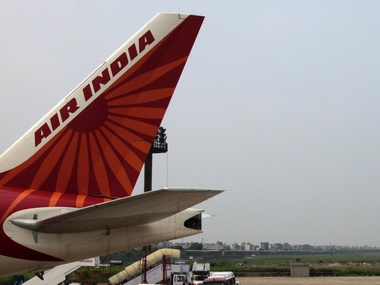New Delhi: Even as the Union cabinet on Thursday agreed to provide a Rs 30,000 crore bailout to Air India over the next eight years, the problem that won’t go away is where to hide its bloated workforce.
By announcing the hiveoff of two subsidiaries from Air India, the government is hoping to bring the airline’s manpower-to-aircraft ratio in line with the industry benchmark. In India, this benchmark is about 150 employees to an aircraft. The government plans to transfer 7,000 employees to the Engineering and MRO subsidiary while another 11,000 will be transferred to the Ground Handling subsidiary.
That’s 18,000 staff gone from the airline. That is, if they 18,000 agree to play ball. And then, there is a Voluntary Retirement Scheme in the works.
Though each of the subsidiaries is to be given some initial equity support, industry experts warn that this move may merely clean up Air India’s books without actually ensuring that the two subsidiaries are individually profit-making. If all the 18,000-and-odd employees agree to the transfer, Air India’s staff strength would be virtually halved. It’s annual salary outgo will also be halved to about Rs 1,500 crore.
[caption id=“attachment_274255” align=“alignleft” width=“380” caption=“By announcing the hiveoff of two subsidiaries from Air India, the government is hoping to bring the airline’s manpower-to-aircraft ratio in line with the industry benchmark.Reuters”]  [/caption]
Impact Shorts
More ShortsBesides, the airline is also in the process of implementing the Justice Dharmadhikari Committee report on rationalising salaries and performance-linked bonuses (PLI) of employees of the erstwhile Air India and Indian Airlines. Civil Aviation Minister Ajit Singh said on Thursday that the implementation of this report will result in savings of another Rs 250 crore in the first year.
As per the Turnaround Plan cleared by the Union Cabinet, the MRO and Engineering subsidiary will get equity support of Rs 375 crore over a three-year period whereas the Ground Handling subsidiary would get Rs 393 crore over 12 years.
To a question on whether the government was merely hiving off subsidiaries to show Air India in better light without any concrete plan for the subsidiaries’ profitability, the minister asked “how can we guarantee profitability in any business?”
He said the first subsidiary is expected to generate profits from 2017-18 whereas the second one will be profitable from the current fiscal itself. But it remains to be seen whether the employees of the airline willingly agree to be transferred to these subsidiaries.
Ajit Singh said the Dharmadhikari report will ensure rationalisation of pay across the airline and the subsidiaries so employees need to cooperate in this matter.
Earlier, the minister has said that a Voluntary Retirement Scheme (VRS) is also on the table to reduce manpower. Already, about 7,000 employees are scheduled to retire from the airline over the next three years.


)

)
)
)
)
)
)
)
)



